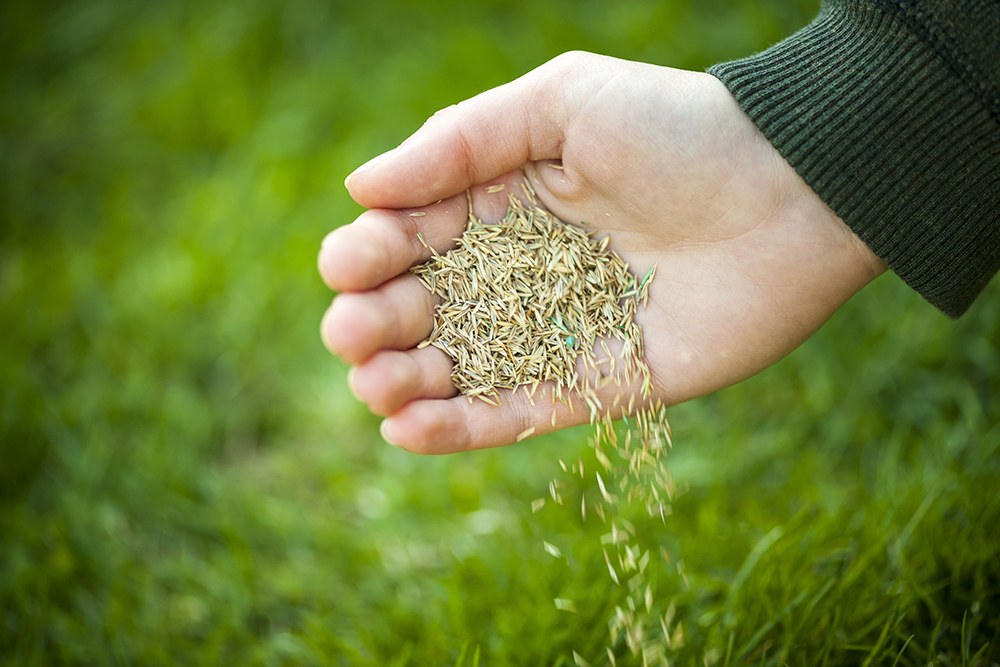Overseeding
Adding fresh grass seed (overseeding) is the best way to rejuvenate thin or bare spots in your lawn. It also fights weeds and reinvigorates old lawns. Grass can get thin and worn out from constant mowing. Overseeding fills in the gaps and strengthens the entire lawn without needing to start over.
Cool season grasses usually spread by sending out tillers—these are shoots that grow across the surface of the ground, then root in and form a new grass plant with leave blades. A blade of grass lives only an average of 45 to 60 days, so production of new tillers must continually outpace the dieback of older grass. Young grass produces tillers faster than older grass, so one of the most important secrets for a healthy, thick lawn is to make sure you have young grass.
Tip #1
Overseeding each year results in your lawn having young grass. And young grass is the secret for a healthy, thick lawn.
 Photo by elenathewise, 123RF
Photo by elenathewise, 123RF
When to Overseed
Fall is the best time to overseed; ideally 45 days before the first frost. Cooler days and shorter nights are best for germination of grass seeds, and grass survival.
If necessary, overseeding can be done in spring or summer, but limit it to a small area and provide extra care, especially for larger areas.
 Grass with dead patches in need of overseeding. Photo by srckomkrit, 123RF
Grass with dead patches in need of overseeding. Photo by srckomkrit, 123RF
Steps to Overseed
- Before overseeding, lower the blades on your mower and cut the grass shorter , usually around 2” tall, to open up sunlight to the ground.
- Ideally, aerate your lawn to mix in the grass clippings, and add a thin layer of compost or worm castings.*
- Choose fresh grass seed that is the most suitable for your location, and follow applications rates from the grower. Disperse the seed across the lawn, ideally by hand.
- Rake seed into the compost and lightly tamp down.
- Water lightly two or three times a day as the seeds germinate to keep them moist. After germination, switch to deep, infrequent watering to avoid root rot, until the new grass is hard to differentiate from the old grass.
- Wait to start mowing the lawn again until the new grass is at least 2 inches tall. Raise your mower blades and resume your other organic lawn care practices.
* If you are not aerating or adding compost along with your seeds, and you still have a lot of grass clippings or dead grass left on the lawn, you can either apply compost tea and wait a few days for the clippings to break down, or rake the clippings up to ensure the new seed has good soil contact. You can either compost those clippings, or add them to a different part of your lawn, or just sprinkle them back lightly over the lawn after reseeding as a thin layer of nutrient rich mulch.